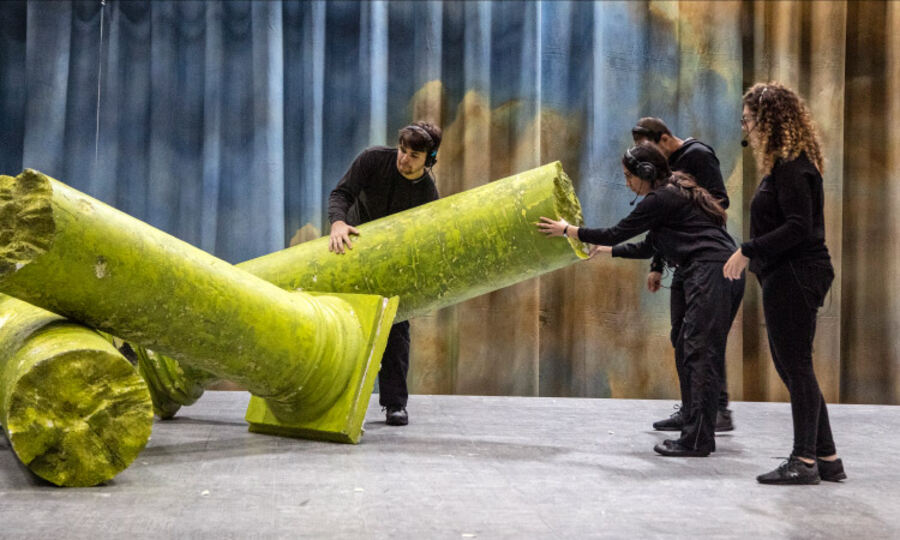Across the country, as graduate training programs select candidates for incoming cohorts, administrators are also making tough decisions about program offerings due to budgetary restrictions. The pandemic has had an outsize effect on universities, and the economic downturn of the past three years is forcing some graduate theatre training programs to pull back on recruitment efforts, reduce class sizes, and cut production budgets.
According to the National Student Clearinghouse, postsecondary enrollment numbers have been on a steady decline, and fall 2022 enrollment dipped further below pre-pandemic levels. Fewer students are pursuing top majors such as business, engineering, and biological sciences at the undergraduate and graduate level, and that usually filters down to smaller budget lines for the arts, particularly for graduate programs.
“Universities are facing a significant financial crunch right now,” said Lisa Portes, the head of the MFA directing program at the Theatre School at DePaul University. “Typically, theatre programs are offset by more lucrative ventures in other areas.”
In March, Penn State University revealed a general budget deficit of $140 million. Low state funding has forced the Big Ten school to slash its football budget by half, leaving the school’s arts programs to fight for a piece of the shrinking pie. This spring, committees advocating for the MFA theatre program are navigating decisions around student production offerings and looming university-wide layoffs.
Despite having a large endowment, the University of Texas at Austin is also feeling the pinch. The MFA theatre program’s budget is supported by rental income, and several summer ballet camps were canceled because of the pandemic. “Our production operating budget is really reliant on how we use our space in the summer,” said KJ Sanchez, head of the MFA directing program. (This year UT Austin’s Theatre & Dance division will run its own summer dance camp.)
Even as graduate programs face financial woes, the aim to maintain excellence is still the goal. For many, continuing to offer tuition remission and production opportunities means they’ll have to offer fewer slots. Penn State offers full assistantships to MFA theatre students, but to maintain that model, they may have to scale back on the number of students admitted into the next cohort in 2024.
“It is important to me that we offer the students a gateway into the professional field—that is always the goal,” said Steve H. Broadnax III, head of Penn’s MFA directing program. “Budgets may diminish, but we are always trying to focus on how the quality of the education can remain the same.”
At the University of California San Diego, the number of spots in the MFA theatre program dropped this year from 25 to 15. “That’s a combination of a perfect storm of things,” explained Lamar Perry, an assistant professor of directing. In addition to the country’s declining economic state, UCSD continues to be impacted by the ongoing resolution of last year’s United Auto Workers (UAW) strike.
Other universities paused recruitment and admissions to give current students the opportunity to continue their studies after COVID-19 halted in-person learning and live performances. While Northwestern University welcomed a new class in the fall of 2020, the program did not admit students in 2021. “We were extremely grateful that the university really got behind the graduate program and supported it so that our students had a fourth year,” said Linda Roethke, head of the MFA design program.
At Brown University, two MFA directing cohorts were granted an additional year of training, pausing admittance two years in a row. The program is currently on hiatus as it engages in a full external review. Likewise, the MFA directing program at Theatre School at DePaul University is on pause. A few MFA directing students decided to take leave when the pandemic forced classes online in 2020, and this under-enrollment flagged the program in the larger university system.
“While our MFA directing program is on pause, we are grateful to our dean, Martine Kei Green-Rogers, and our provost, Salma Ghanem, for their support as we revision the program with the aim of taking in MFA directors again within the next three to five years,” said Portes. “It is our intent to use the pause to reimagine a new program for a changing field, one that would also be economically viable for both the university and the graduate students.”
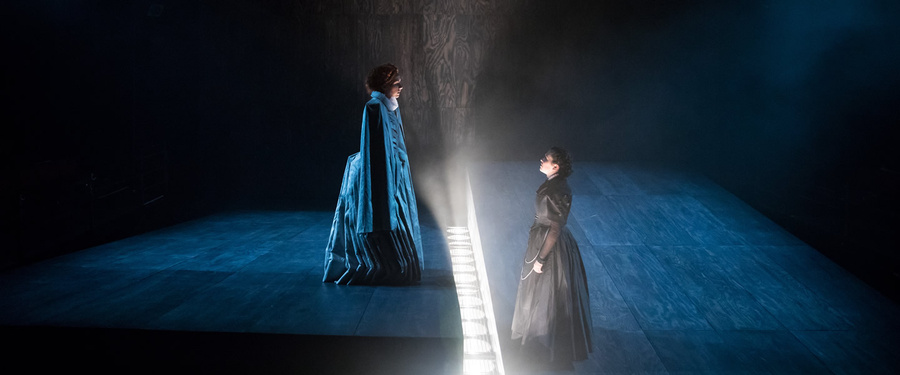
The economic viability of graduate programs is becoming an increasingly complicated question. The majority of MFA theatre programs offer tuition remission, housing, and stipends, but with inflation ramping up, the cost of supporting students is rising. Potential candidates are also carefully assessing the cost-benefit analysis as the financial landscape grows more precarious.
UT Austin’s Sanchez said she feels the weight of this responsibility. “Are we giving students what they came for?” she wondered. “They’re taking three years out of their life and they’re moving far away from everything they know.”
MFA directing and playwriting students at UT Austin receive paid teaching appointments, but the ballooning cost of living in Austin, now at a record high, poses another hurdle. A recent survey revealed that UT Austin graduate theatre students accrue between $10,000 and $20,000 of debt during their graduate tenure. A few years ago, the students successfully led a charge to increase the teaching compensation and health benefits package. (The increased funds for the teaching appointments, however, meant the university had to cut back on the number of admitted students.)
As graduate school is a substantial commitment of time and resources, UCSD’s Perry believes the best way to offer value to graduate students is to listen intently to their needs. “Everyone is thinking about how much things cost, you know, what is valuable to me?” he said. “Being open and having those conversations is extremely important, because when the students don’t feel listened to, then you have chaos.”
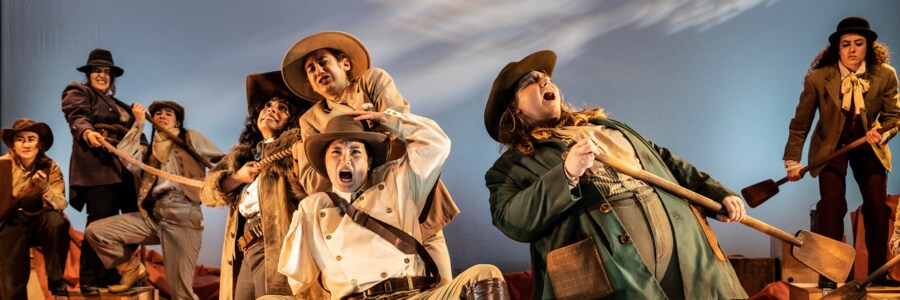
In the wake of George Floyd’s murder and the We See You, White American Theater movement, students are demanding change and the establishment of anti-racist practices in academia. This moment of budgetary and pedagogical transformation is being met by a racial reckoning.
“Zoom and this moment of contraction are really giving space to folks to imagine how to de-center what has prevailed in training for the last 50 years, and to think about how to meet the world right now,” said UCSD’s Perry. “The needs of artists, directors, actors, and playwrights are radically different in 2023.”
Students no longer have patience with half measures. “They are demanding a decolonized curriculum and for the global majority to be seen and heard onstage,” said Sanchez. Added Penn State’s Broadnax, “Students are not taking it anymore. They know that they have a voice, they know they have agency, and they demand equity and diversity. When I was in school, I had no agency.”
The pandemic has also spotlighted the need for greater student support services. UT Austin faculty engage in retreats on burnout and sustainability to prioritize the students’ mental health. At Penn State, Broadnax leads with the philosophy “people over plays.” He puts the focus on students’ physical and mental well-being, and is heartened that the university provides psychological services and has a wellness center for theatre students.
At the University of Washington, change is happening at the top, with an effort to hire more teachers of the global majority.
“We have a pretty good set of anti-racist goals, and we are checking in on how to diversify the canon of the curriculum, how to be more inclusive of other perspectives and points of view, and how to think about a more global approach,” said Valerie Curtis-Newton, head of UW’s MFA directing program.
“Training programs have been making concerted efforts over the last many years to train artists for a changing field, which means training more artists of color, more artists who identify as having disabilities, more gender-expansive artists to lead the changing field,” said Lisa Portes. “If the training programs contract now, that’s going to create an overall contraction of who is entering the American theatre ready to hit the ground running and make positive change.”
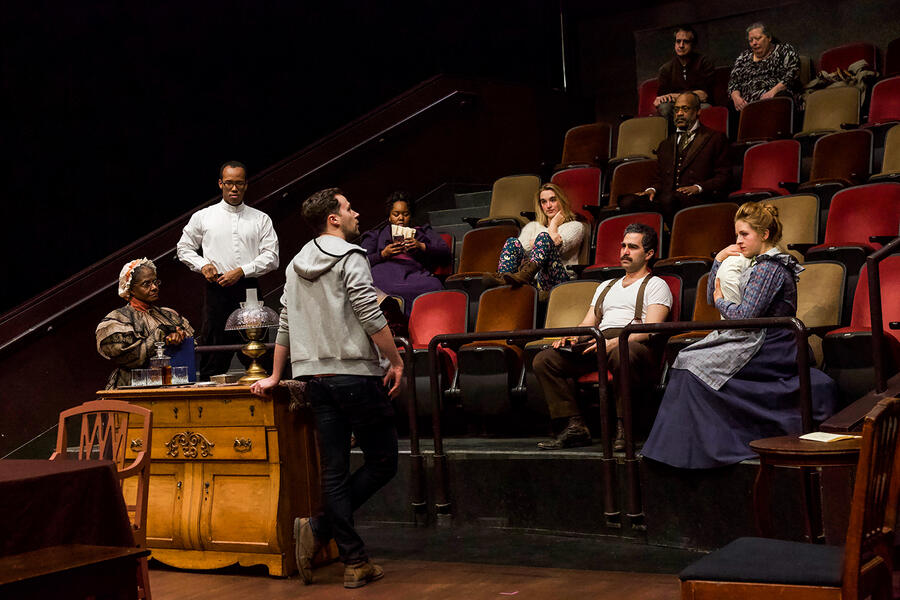
Students are still applying for coveted spots in MFA programs, regardless of the barriers to entry, shrinking class sizes, or ill-boding statistics. In many ways, though, the pandemic is changing the composition of cohorts.
Brown University’s Brown/Trinity MFA acting program has had more applicants since the program went tuition-free in 2018, but the applicant pool has changed since the pandemic. Sophia Skiles, head of the acting program, has noted a surge of applicants who did not study theatre at the undergraduate level. Skiles believes the pandemic pause gave many people an opportunity to reexamine their passions.
“Brown/Trinity prides itself on really being accessible to first-generation students for whom there were certain pressures to study a certain thing as undergraduates,” says Skiles. “With the tuition-free piece, folks get to ask themselves that question again.”
The number of applicants for UT Austin’s directing and playwriting programs was lower this year, “but it was one of our strongest years in terms of quality of applicants,” said Sanchez. “Students are coming in with a body of work and a ferocity.”
The University of Washington has seen an increase of older applicants with more work experience applying to the MFA program, and a rise of cross-disciplinary artists pursuing graduate studies.
“Most of our undergraduate [theatre] majors are double majors—they are already Plan B-ing themselves,” said Curtis-Newton. “The MFA level manifestation of that is a consideration of what we’re calling more of a hyphenate artist. Part of what we’re navigating right now is finding enough space on the plate for the hyphens without pushing the rigor of craft in the various areas off the plate.”
Despite the caliber of students coming through now, educators are facing the reality of a looming demographic cliff in a few years. Statistics show that because of the Great Recession of 15 years ago, the birth rate declined, so there will be fewer undergraduates in 2025.
“This is a once-in-a-generation field shift that we’re seeing right now,” said Portes. “If training programs can figure out a way to stay alive and pivot at the same time, I think we’re going to be inventing some really exciting genre-shifting training moving forward.”
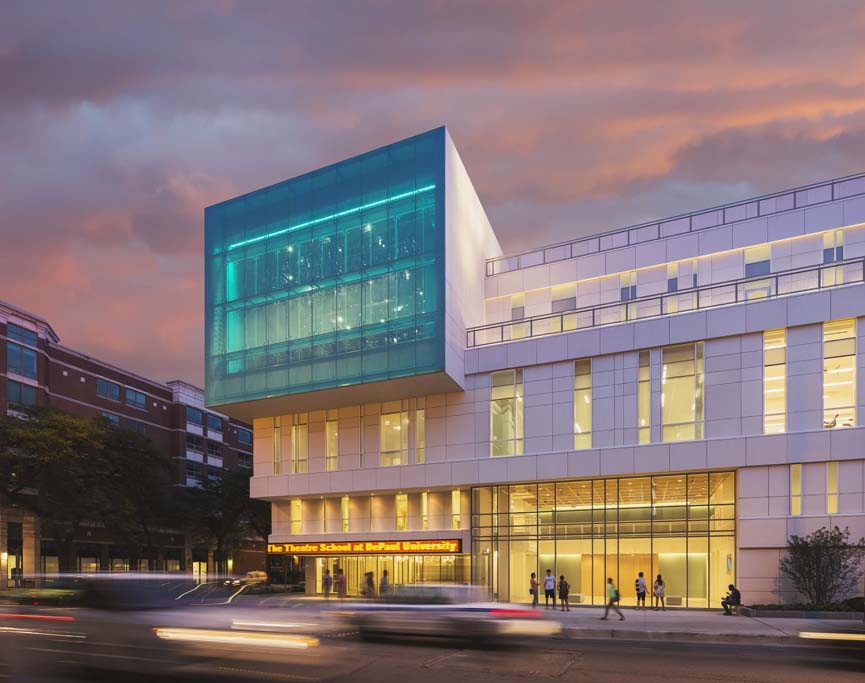
Over the past few years, reimagining training programs for the shifting industry has required swift adaptation and inventiveness, and virtual education cracked open new ways of learning. “COVID propelled us forward in the way we were doing arts education,” said Penn State’s Broadnax. “I believe that online-and-in-person is the way to go.”
Indeed, several programs are continuing to offer some Zoom classes, particularly for business courses and guest lectures. The virtual access to working professionals offers students a closer look at the field, which is especially beneficial for programs outside the glare of big cities.
For research-intensive universities, the virtual learning model has been a boon for educators, who can travel for productions and continue to mentor and teach virtually from the road. For his part, UCSD’s Perry just wrapped a workshop production at Penumbra Theatre Company in Minneapolis, all while moving ahead with the winter semester.
At the University of Washington, the pivot to virtual learning inspired the directing students to explore devising and directing on-camera work for TV and film projects. The pandemic also compelled educators and students to think creatively about how to present plays. UT Austin students turned fallow land on campus into a blooming community garden for an outdoor performance, with audience members invited to sit among kale and collard greens.
This out-of-the-box approach to theatremaking is both a response to dwindling resources and to the needs of a changing industry. For many decades, graduate training programs have been designed to prepare MFA students to present premiere workshop productions at regional theatres. “We’re learning that it doesn’t actually have to be that way,” said Sanchez. “If students are here to work on craft, there are so many different ways to achieve that.”
UW’s Valerie Curtis-Newton recalls the challenges of the 2008 recession for educators preparing students to enter a field with few work opportunities. At that time, the big question was, “Where are they going to work?” The question now, she said, is, “How are they going to work?”
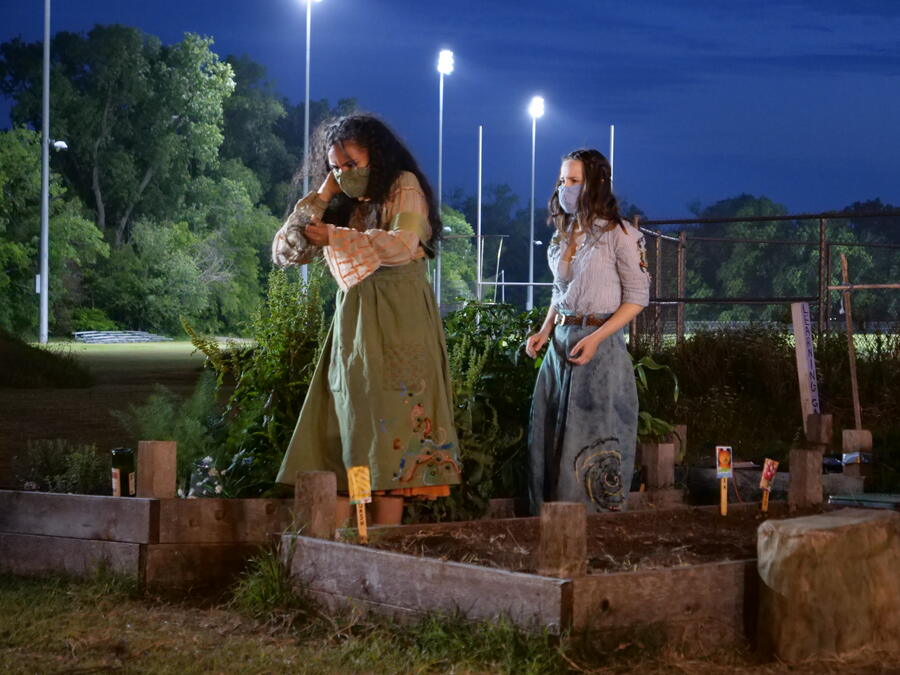
Randolph College is building a new program to meet the needs of students and a changing field. This summer, the liberal arts school in Lynchburg, Va., will welcome its first cohort of multi-disciplinary MFA theatre students. The two-year low-residency program, modeled after the school’s successful creative writing track, will bring students together biannually for on-campus intensives. In the interim, students will work remotely with mentors and collaborators.
“The track to an MFA in acting, directing, design, and many of the other subdisciplines—it feels like one has to be able to hit pause on their life and move wherever they get in and be there and be in intensive training from early in the morning until late at night,” said Stephanie Holladay Earl, head of Randolph’s MFA theatre program. “I don’t think that path suits everyone, and it leaves a lot of people out.”
The program aims to meet the needs of artists in a post-pandemic reality; its tagline is “theatre for the modern world.” The curriculum will feature courses that focus on equity, diversity, and inclusion. Indeed, while established programs are shifting their practices to mandate EDI training for faculty and intimacy coordination in student productions, those practices will be baked into the Randolph College mission from the start.
“People see our mission and they connect with it,” said Holladay Earl, calling interest in the program so far “overwhelming. I think this is a really good sign of the values people have in the industry moving forward. The enthusiasm for these practices in education makes me feel very hopeful.”
Despite the economic turmoil and the ongoing struggle to prove the value of the arts, theatre educators retain hope. Curtis-Newton likens the University of Washington to a canary in the coal mine for programs currently struggling—and so far the canary is still singing. After the hiring freezes and limited budgets after the 2008 recession, the University of Washington’s theatre program thrived, and it’s still thriving amid the challenges of the pandemic.
“Knowing that we had cuts of lines for a number of years, and we’re still here, and we’re expanding and we’re looking at our research and our impact on the field in a more muscular way,” she said. “Those are all reasons for hope.” Another reason for hope? “Students are still coming, despite all the obstacles.”
UT’s Sanchez recently saw a production of A Chorus Line and was reminded that the fear of the industry dying has been around a long time. The “where,” the “how,” and the “what” of theatre education may be changing, but the “why” remains.
“As hackneyed as it sounds, there’s that song at the end—‘What I Did for Love,’” Sanchez said. “I think that is what we’re in right now. People are going to grad school to work on their craft and find their future collaborators, and they’re doing this because they have to make theatre.”
Allison Considine (she/her) is a former senior editor of this magazine.

